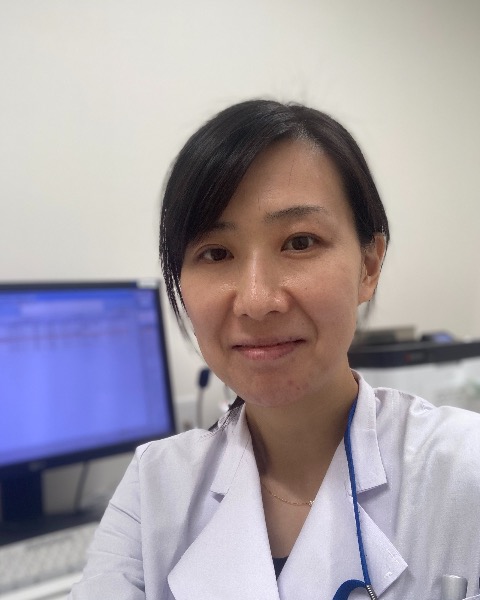Back
General Session VII
General Session VII - Superficial Venous Disease and Vascular Malformations
Quickshot: Hypersensitivity Reaction After Cyanoacrylate Closure and Premedication-2nd Report
Tuesday, March 5, 2024
5:23 PM - 5:29 PM EST
Location: Tampa Bay Ballroom Salons 1-4
Objective:
Hypersensitivity reactions sometimes occur after cyanoacrylate closure (CAC) of varicose veins. However, its pathogenesis, allergic reactions, and thrombophlebitis are not well understood. We report hypersentivity reactions that we experienced at our clinic.
Methods:
We retrospectively analyzed 131 patients who developed any skin symptoms after CAC from September 2020 to January 2023, we classified into three types: localized mild, localized moderate, and full-body. Localized-mild was soft and pale erythema, and localized-moderate was hard erythema. We also examined the time of onset, blood sample results, and duration of the symptoms.
Results:
There were 100 mild cases and 28 moderate cases, including two cases of puncture site abscess with granuloma formation, and the full-body type was 3. Three of these were typical urticaria cases. We then analyzed 68 patients who underwent blood sampling. The mean time of appearance was 2.7 weeks postoperative for mild and 3.1 weeks for moderate. The mean duration of symptoms was mild 3.9 weeks, moderate 5.1 weeks, and full body (1 week). Clinically, the mild and moderate groups had allergic and phlebitis, respectively. However, Blood data did not differ significantly depending on the skin type. 33.8% had eosinophilia ( >500) and 66.2% had positive CRP levels ( >0.3). Moreover, in 22.0% of the patients, both eosinophilia and positive CRP were observed, and in 22.0%, neither. All patients, except one who had interrupted hospital visits, were relieved with topical and oral steroids.
Conclusions:
In most cases, symptoms were localized to the puncture site. Only 2% of the patients had full- body type. The time of appearance varied from case to case, regardless of the skin type, and blood data showed no differences by skin type. Our data suggest that phlebitis and allergies coexist in various proportions at several time points. CAC procedure can be related to clot formation at gaps in veins. Moreover, there are reports that eosinophils increase immediately after glue input and unnecessary activation of eosinophils can promote thrombus formation. Allergies and phlebitis are closely related. In addition, in cases with an abscess at the puncture site, it was not easy to differentiate from infection clinically. Histopathological examination revealed a foreign-body granuloma. Therefore, it is important to suppress excessive immune reactions and inflammation triggers at the time of the glue injection. Premedication has already been sufficiently tested for transplantation and ischemia-reperfusion injury.
Hypersensitivity reactions sometimes occur after cyanoacrylate closure (CAC) of varicose veins. However, its pathogenesis, allergic reactions, and thrombophlebitis are not well understood. We report hypersentivity reactions that we experienced at our clinic.
Methods:
We retrospectively analyzed 131 patients who developed any skin symptoms after CAC from September 2020 to January 2023, we classified into three types: localized mild, localized moderate, and full-body. Localized-mild was soft and pale erythema, and localized-moderate was hard erythema. We also examined the time of onset, blood sample results, and duration of the symptoms.
Results:
There were 100 mild cases and 28 moderate cases, including two cases of puncture site abscess with granuloma formation, and the full-body type was 3. Three of these were typical urticaria cases. We then analyzed 68 patients who underwent blood sampling. The mean time of appearance was 2.7 weeks postoperative for mild and 3.1 weeks for moderate. The mean duration of symptoms was mild 3.9 weeks, moderate 5.1 weeks, and full body (1 week). Clinically, the mild and moderate groups had allergic and phlebitis, respectively. However, Blood data did not differ significantly depending on the skin type. 33.8% had eosinophilia ( >500) and 66.2% had positive CRP levels ( >0.3). Moreover, in 22.0% of the patients, both eosinophilia and positive CRP were observed, and in 22.0%, neither. All patients, except one who had interrupted hospital visits, were relieved with topical and oral steroids.
Conclusions:
In most cases, symptoms were localized to the puncture site. Only 2% of the patients had full- body type. The time of appearance varied from case to case, regardless of the skin type, and blood data showed no differences by skin type. Our data suggest that phlebitis and allergies coexist in various proportions at several time points. CAC procedure can be related to clot formation at gaps in veins. Moreover, there are reports that eosinophils increase immediately after glue input and unnecessary activation of eosinophils can promote thrombus formation. Allergies and phlebitis are closely related. In addition, in cases with an abscess at the puncture site, it was not easy to differentiate from infection clinically. Histopathological examination revealed a foreign-body granuloma. Therefore, it is important to suppress excessive immune reactions and inflammation triggers at the time of the glue injection. Premedication has already been sufficiently tested for transplantation and ischemia-reperfusion injury.

Kazuyo Sujino, MD
Chief of Dermatology
Murayama Medical Clinic, Kannai Medical Clinic, and Medical Corporation Keihakukai
Yokohama, Kanagawa, Japan
